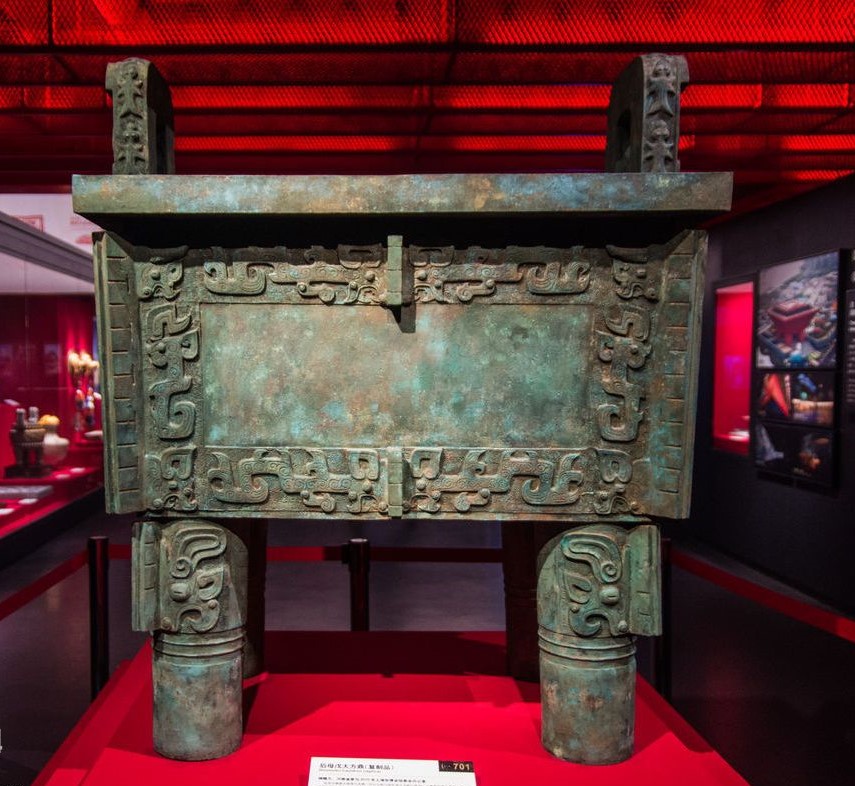
The Houmuwu Tripod (also known as Houmuwu Dangding, formerly known as Simuwu Tripod) was a square bronze tripod used for royal rituals in the late Shang Dynasty (circa 13th to 11th century BCE). It was named after the inscription “Houmuwu” on the inside of its belly. The name “Hou Mu Wu” was the temple name of Wu Ding’s concubine, Wen Neng (jǐng). The tripod was probably cast by Zu Geng or Zu Jia to pay homage to his mother. It is now in the National Museum of China and is a national cultural relic.
The Shang Houmuwu tripod is 133 cm high, 110 cm long and 79 cm wide, and weighs 832.84 kg; the vessel has thick vertical ears, a folded rim, and a rectangular abdomen with a four-pillar foot. The four corners of the belly, the middle of the upper and lower edges, and the upper part of the foot are all set with a title rib. “The body and four feet of the Shang Houmuwu tripod were cast as a whole, while the ears were cast after the body of the tripod was cast. The Shang Houmuwu tripod is a huge, majestic, and exquisitely crafted vessel with elaborate dragon and taotie patterns cast around the body, adding to the sense of majesty and gravity of the relic itself. The cicada pattern cast on the foot shows the body of the cicada with clear lines. The three characters “Houmuwu” are cast on the inner wall of the abdomen in a robust, richly shaped script, with the strokes starting and stopping with a strong peak and a fat stroke.
The Shang Huanmuwu tripod is the heaviest bronze known in ancient China; the casting of the Shang Huanmuwu tripod fully illustrates that the bronze casting of the late Shang Dynasty was not only large in scale, but also well-organized and meticulously divided, representing the highly developed Shang Dynasty bronze culture; on January 18, 2002, it was included in the “First Catalogue of Cultural Relics Banned from Export Exhibition” by the State Administration of Cultural Heritage as a national-level cultural relic.
During the Shang and Zhou dynasties, the bronzes were not only rich in variety and quantity, but also highly skilled in production. The craftsmen at that time mastered the ratio of copper, tin and lead accurately, and used them to make different kinds of utensils. Metal processing and finishing processes. By the late Shang Dynasty, the pro-balance industry was not only large in scale, but also well-organized and meticulous in the division of labor to shape large objects, such as the Smu roof, the heaviest bronze in the world, weighing 832.84 kg, which is the heaviest unearthed in the world, and the process of shaping such a large object is very complex and requires the cooperation of many people to complete. Some scholars believe that the Simuwu Tripod should be called “Houmuwu Tripod”.